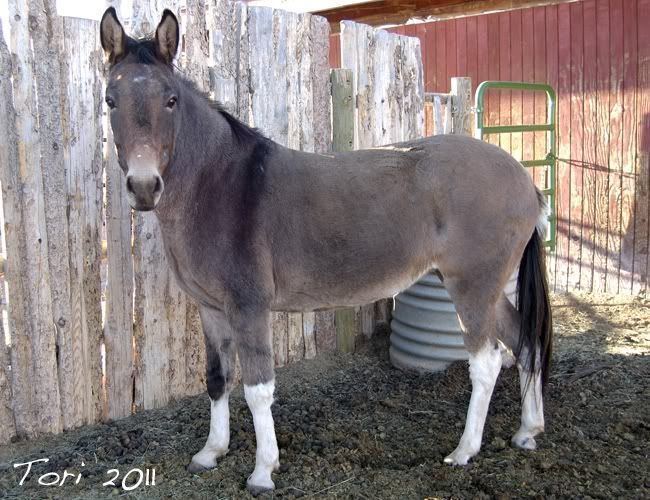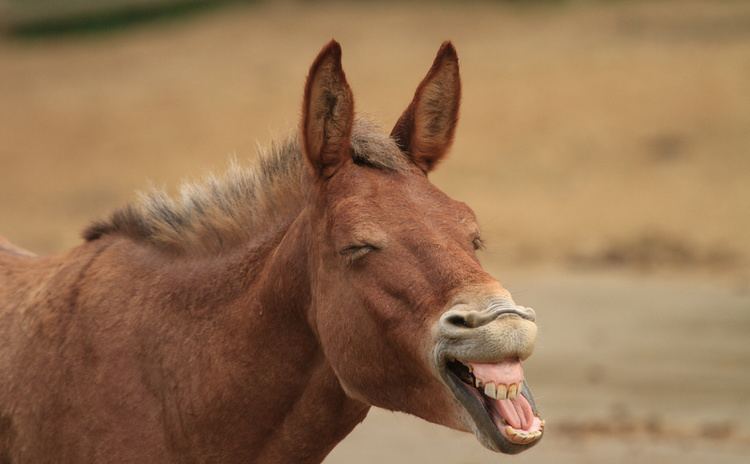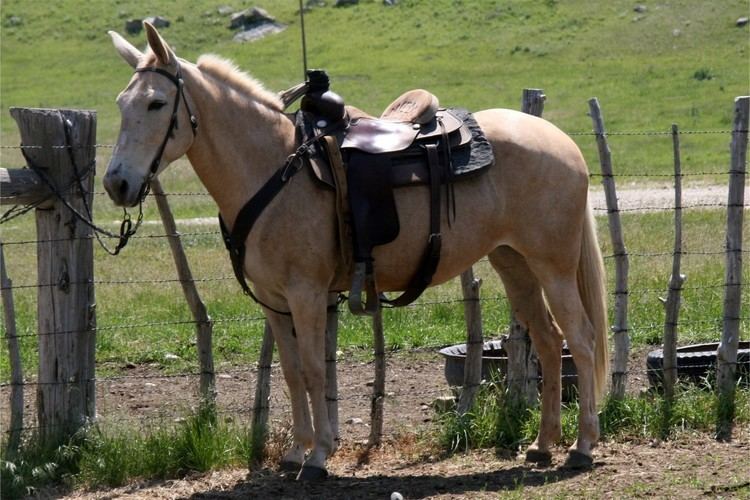Rank Hybrid | Phylum Chordata Order Perissodactyla | |
 | ||
Scientific name Equus asinus x Equus caballus Similar Mule, Donkey, Wholphin, Liger, Beefalo | ||
25 reasons to ship hinny
A hinny is a domestic equine hybrid that is the offspring of a male horse, a stallion, and a female donkey, a jenny. It is the reciprocal cross to the more common mule, which is the product of a male donkey (jack) and a female horse, a mare.
Contents

Description
Hinnies on average are slightly smaller than mules in part because donkeys are generally smaller than horses, and growth potential of equine offspring is influenced by the size of the dam's womb. There is debate over whether this is the only reason for the size variances between the two types of hybrid equines. Some fanciers believe this size difference is only physiological, owing to the smaller size of the donkey dam, as compared to mares, which are generally much larger. Others claim it is a natural consequence of the reciprocal cross. The position of the American Donkey and Mule Society (ADMS) is: "The genetic inheritance of the hinny is exactly the same as the mule."

Like mules, hinnies do come in many sizes. This is because donkeys come in many sizes, from miniatures, as small as 24 inches (61 cm; 6 hands) at the withers, to American Mammoth Jacks that may be over 15 hands (60 inches, 152 cm) at the withers. Thus, a hinny is restricted to being about the size of the largest breed of donkey. Mules, however, have a female horse as a parent, so they can be as large as the size of the largest breed of horse, such as those foaled from work horse mares such as the Belgian.

Other than size, some additional minor differences occur that can be used to distinguish between mules and hinnies. The head of a hinny is said to resemble that of a horse more than it does a mule's, with shorter ears (although these are still longer than those of horses), and more horse-like manes and tails than mules. A male hinny is properly called a horse hinny, and a female hinny is properly called a mare hinny, though in British English both female hinnies and a female donkeys are sometimes called a jennet.
Fertility, sterility, and rarity
Hinnies are difficult to obtain because of the differences in the number of chromosomes of the horse and the donkey. A donkey has 62 chromosomes, whereas a horse has 64. Hinnies, being hybrids of those two species, have 63 chromosomes and are sterile. The uneven number of chromosomes results in an incomplete reproductive system. According to the ADMS: "The equine hybrid is easier to obtain when the lower chromosome count, the donkey, is in the male. Therefore breeding for hinnies is more hit-and-miss than breeding for mules."
The male hinny or mule can and will mate, but the emission is not fertile. Male hinnies and mules are usually castrated to help control their behavior by eliminating their interest in females.
Female hinnies and mules are not customarily spayed, and may or may not go through estrus. Female mules have been known, on rare occasions, to produce offspring when mated to a horse or donkey, although this is extremely uncommon. Since 1527, more than sixty cases of foals born to female mules around the world have been documented. In contrast, according to the ADMS, there is only one known case of a female hinny doing so.
Namely, in China, in 1981, a hinny mare proved fertile with a donkey sire. When the Chinese hinny was bred to a jack, she produced the so-called "Dragon Foal", which resembled a donkey with mule-like features. In Morocco, in 2002, a mule mare bred to a donkey sire produced a male foal. DNA testing revealed the foal has a mixed karyotype hybrid like the Chinese hinny offspring "Dragon Foal".
Hinnies are rare for many other reasons. Jennies and stallions can be choosier about their mates than horse mares and donkey jacks. Thus, the two parties involved may not care to mate. Even if they do cooperate, female donkeys are less likely to conceive when bred to a horse than horse mares are when bred to a donkey. Breeding large hinnies is an even bigger challenge, as it requires stock from a jenny of large size, such as the Baudet de Poitou or American Mammoth Donkey. Mammoth donkey stock is becoming increasingly rare and has been declared an endangered domestic breed. Fanciers are unlikely to devote a Mammoth jenny's valuable breeding time to producing sterile hinny hybrids, when Mammoth females are in high demand to produce fertile pure-bred Mammoth foals.
